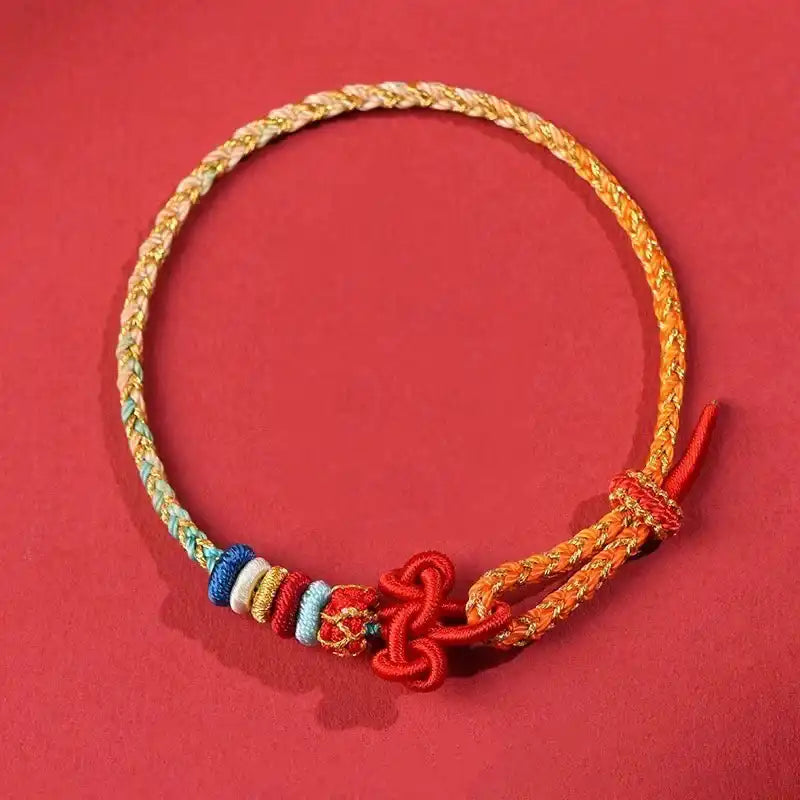
What Is “Knotting”? Cultural Origins of Ancient Chinese Corded Accessories
Share
“Knotting” is more than a craft—it is a deep-rooted part of Chinese civilization. From ancient methods of record-keeping to decorative spiritual symbolism, knots have evolved into one of the most meaningful design elements in Chinese accessories. Red threads, five-color cords, and intricately tied knots are not simply aesthetic choices; they embody cultural memory, protection, and connection.
1. The Origin: “Knot-Tying for Records” in Ancient China
Before the invention of Chinese writing, early civilizations used knotted cords (结绳记事) as a way to record important events, numbers, or tribal laws. This is documented in texts such as the Book of Changes (易经) and Records of the Grand Historian (史记), which note that in high antiquity, people “kept records through knots.”
Knotting was also used as a ceremonial tool in ancestral worship, tribal agreements, and early military communication.
2. Symbolism of Knotting in Ritual and Daily Life
Knots came to represent: - Binding of vows and trust - Connection between heaven and man - Endless cycle of fortune
This evolved into decorative knots found in imperial garments, temple banners, and personal amulets—serving both spiritual and aesthetic purposes.
3. Why Red and Multicolored Threads?
In Chinese accessory traditions: - Red thread symbolizes protection, luck, and is often worn as a talisman against evil (especially in bracelets). - Five-color cords (五色绳)—red, yellow, blue, white, and black—represent the Five Elements and are used in Taoist rituals and child protection bracelets.
These cords are still worn today during festivals like the Dragon Boat Festival (端午节) and Qixi (七夕).
4. Regional Knotting Styles and Techniques
China boasts a wide range of knotting styles: - Pan Chang knot (盘长结): Represents eternity; seen in traditional jewelry and embroidery. - Double Coin knot (双钱结): Symbol of wealth and harmony. - Cantonese thread-knotting: Uses ultra-fine silk for delicate amulets. - Tibetan rope-weaving: Features complex braids used in prayer accessories.
Contemporary jewelry makers now blend these regional forms with minimalist designs.
